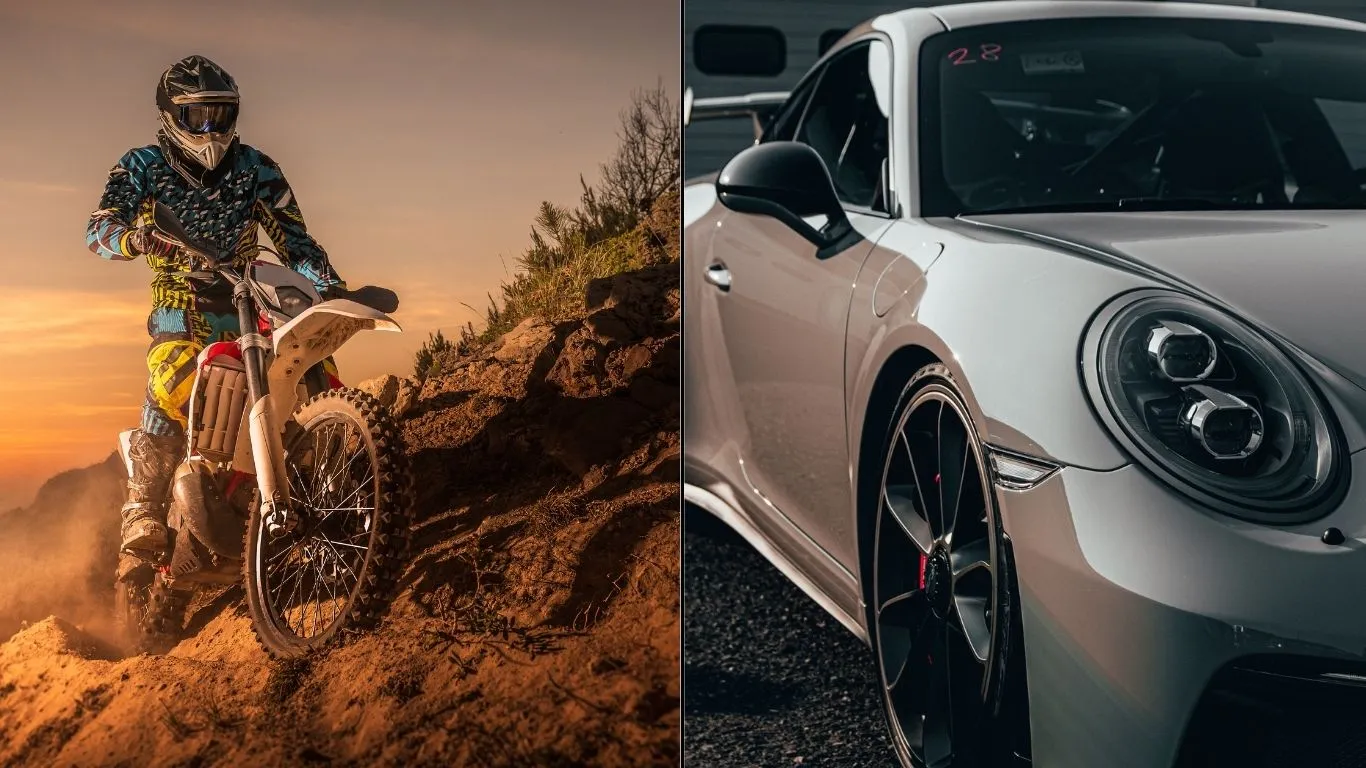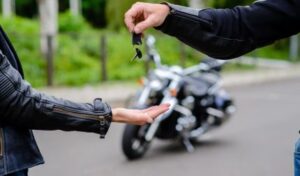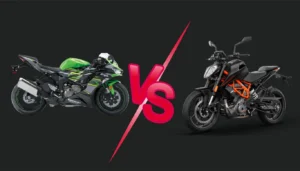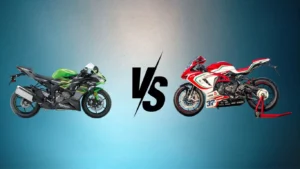When it comes to comparing the fuel efficiency of dirt bikes and cars, a plethora of factors come into consideration. Ranging from the type of fuel used to the terrain in which the vehicle is predominantly driven, right down to the very design and weight of the vehicle itself, these factors can greatly influence the fuel efficiency of both dirt bikes and cars. But what makes more economic sense? Let’s dive into the intricacies.
Determinants of Fuel Efficiency
Before diving into a thorough comparison, it’s important to grasp the factors that determine fuel economy. Here are some key determinants of the fuel efficiency of a vehicle:
- Type of Fuel: Vehicles running on different fuels have different efficiencies. Diesel, petrol, and electric have widely varying fuel efficiencies.
- Vehicle Weight: A heavy vehicle requires more power to move, burning more fuel in the process.
- Aerodynamics: A streamlined vehicle design reduces drag, increasing fuel efficiency.
- Terrain: Rough or hilly terrain can reduce the fuel efficiency of a vehicle significantly due to the increased need for power.
- Driving Habits: Hard acceleration and braking can greatly reduce fuel efficiency.
Fuel Efficiency: Dirt Bikes Vs Cars
When it comes to fuel efficiency, comparing a dirt bike to a car isn’t as straightforward as it seems. They both serve different purposes, and their efficiency can vary dramatically based on the above-listed factors. However, we’ve tried to compare them on some common grounds. Let’s see!
Note: These comparisons are based on average data. Actual fuel efficiency can vary based on specific makes and models.
City Driving
Generally, when it comes to urban driving scenarios, dirt bikes often outperform cars in terms of fuel efficiency. This superior efficiency is largely attributed to their smaller engine dimensions and decreased weight.
Highway Driving
In terms of highway driving, cars normally tend to have higher fuel efficiency. This is mainly due to the fact that cars are designed for seamless long-distance journeys, while dirt bikes aren’t necessarily designed for this purpose.
Off-Road Conditions
For off-road conditions, dirt bikes have a definitive edge due to their specialized design and lighter weight. However, this efficiency might be diminished when carrying heavy loads or riders.
Also Read: Honda vs Hyundai: In-Depth Comparison and Ultimate Car Showdown
Getting to Grips with Miles Per Gallon
For many people, the term “miles per gallon,” or mpg, often flies over their heads. But if we strip it back to basics, it’s all about how many miles your vehicle can travel per gallon of fuel. So, let’s dive in and figure out what exactly this means for your car or dirt bike.
Understanding MPG
Miles per gallon, or MPG, is a means to measure the efficiency of a vehicle when consuming fuel. In simple terms, it tells you how far your vehicle can travel on a single gallon of fuel.
How to Calculate MPG
To calculate MPG, you only need two things: the distance you’ve traveled and the amount of fuel you’ve used.
From there, you can find the MPG by dividing the total distance traveled by the total amount of fuel consumed. The resulting number represents the miles that can be traveled for each gallon of fuel.
Why MPG Matters
You might be asking yourself, Why does MPG even matter? Well, it’s quite straightforward. A higher MPG means the vehicle is more fuel-efficient, which translates to less time and money spent on fuel. It’s a crucial figure for those keen to save money and reduce their environmental impact.
Miles per Gallon in Cars Vs. Dirt Bikes: An Overview
Now that we’ve laid out what MPG is and why it matters, we can dive in to compare the fuel efficiency of dirt bikes and cars.
- Cars: Cars typically range from approximately 15 to 30 MPG in city driving and 20 to 40 MPG on the highway, depending on the make, model, and year of the car.
- Dirt Bikes: Dirt bikes, on the other hand, can reach up to 100 MPG on average. However, the wide range of dirt bike models and their various conditions can dramatically alter the fuel efficiency.
| Vehicle type | City MPG (Average) | Highway MPG (Average) |
|---|---|---|
| Cars | 15-30 | 20-40 |
| Dirt Bikes | Up to 100 | Up to 100 |
While dirt bikes may have higher MPG values, remember that a variety of factors can influence these numbers, particularly the conditions in which they are driven. Make sure to consider these before making a final decision on your preferred mode of transport.
Factors Affecting Fuel Efficiency
Let’s simplify things and talk about what influences fuel efficiency on both dirt bikes and cars.
Vehicle Make and Model
Firstly, the make and model of the vehicle in question play a significant role in fuel efficiency. Different manufacturers use various technologies to decrease fuel consumption and increase mileage.
For instance, dirt bikes that are primed for racing, such as motocross bikes, consume fuel at a higher rate than trail bikes designed for casual riding.
Driving Behavior
Interestingly, how you operate your vehicle greatly impacts its fuel efficiency. Hard accelerations, abrupt stops and high-speed cruising are fuel-guzzling.
On the other hand, moderate accelerations, slowed stops and reduced cruising speed can significantly enhance the miles per gallon (MPG), whether you’re behind the wheel of a car or straddling a dirt bike.
Maintenance
Believe it or not, regular maintenance can affect your vehicle’s fuel consumption as well. A properly tuned engine, paired with fresh oil and clean air filters, is key to a fuel-efficient ride.
This applies to both cars and dirt bikes. Furthermore, tire conditions, particularly pressure, impact fuel efficiency too. Underinflated tires can increase fuel consumption as they increase rolling resistance.
Vehicle Load
Remember that a heavier vehicle requires more energy to move, which implies more fuel consumption.
The key here is to eliminate unnecessary weight, whether in a car’s trunk or a dirt bike saddlebag, to ensure maximum fuel efficiency.
Fuel Type
Lastly, the type of fuel you use can significantly affect your vehicle’s fuel efficiency. Higher-octane fuel often delivers better performance and efficiency.
However, it’s crucial to check the manufacturer’s guidelines for your particular vehicle model’s fuel requirements.
Also Read: Honda CB500X vs. Kawasaki Versys 650: A Battle of Mid-Range Bikes
Summary Table
| Factor | Cars | Dirt Bikes |
|---|---|---|
| Vehicle Make and Model | ✔️ | ✔️ |
| Driving Behaviour | ✔️ | ✔️ |
| Maintenance | ✔️ | ✔️ |
| Vehicle Load | ✔️ | ✔️ |
| Fuel Type | ✔️ | ✔️ |
By understanding these factors and abiding by them, you can optimize the fuel efficiency of your vehicle efficiently, reducing both your fuel costs and your environmental footprint.
How to Improve Fuel Efficiency in Your Dirt Bike or Car
Having a clearer understanding of fuel efficiency can certainly lead you to make more informed decisions when it comes to your mode of transport.
Whether you’re choosing between a car and a dirt bike or simply seeking ways to improve the fuel efficiency of your current vehicle, you can take certain steps to make a notable difference.
By adjusting your driving habits, maintaining your vehicle, and paying attention to certain factors, you can significantly increase the fuel efficiency of either a dirt bike or a car. While both have their own unique properties, many of these strategies apply across the board. Let’s delve into more specifics.
Adjusting Your Driving Habits
The way you drive has a huge impact on the fuel efficiency of your vehicle. For both cars and dirt bikes, it’s essential to keep your speed steady and avoid fast acceleration or sudden braking.
This is not only safer but also consumes less fuel compared to aggressive driving styles.
Use Cruise Control
When you’re driving on the highway or an open road, using the cruise control feature can help maintain a constant speed, reducing unnecessary fuel consumption due to speed fluctuations.
Limit Idle Time
Leaving your vehicle idling for prolonged periods also guzzles fuel. While in traffic or waiting, it’s better to switch off the engine if you predict a wait longer than one minute.
Regular Maintenance
Keeping your vehicle well-tuned and in good condition directly impacts its fuel efficiency. Whether it’s a car or a dirt bike, regular maintenance can lead to substantial long-term fuel savings. This includes oil changes, tyre pressure checks, and more.
Regular Oil Changes
Keeping your engine lubricated with clean oil reduces strain and allows your vehicle to run more smoothly, using less fuel in the process.
TYRE Pressure Checks
Properly inflated tires have less rolling resistance, which means they don’t need as much energy to push your vehicle down the road, thereby reducing fuel consumption.
Choose the Right Fuel
As you know, not all fuels are created equal. Some types have a higher energy output than others, which might cost more upfront but provide increased fuel efficiency, making it a cost-effective choice in the long run.
Premium Fuels
Despite their higher prices, premium fuels have the potential to increase the miles per gallon of your vehicle, be it a dirt bike or a car. Using them can be a cost-effective durability and performance investment.
Eco-friendly Fuels
Electric and hybrid vehicles, while slightly more expensive to purchase than their gas-dependent counterparts, often provide significant savings both in terms of fuel efficiency and environmental impact.
Choosing the Right Vehicle for Your Lifestyle
Now that you’ve understood fuel efficiency, how to calculate MPG and the various factors that influence it, it’s time to decide which vehicle aligns more closely with your lifestyle.
The choice between a dirt bike or a car not only depends on your personal preference but also on factors such as your driving habits, where you live and work, your budget, and perhaps most importantly, your attitude towards environmental sustainability.
Remember that a more fuel-efficient vehicle can help reduce your carbon footprint and promote a healthier environment.
Let’s delve a bit deep and discuss some important factors that could guide your choice. Remember, there’s no one size fits all solution here – it all depends on your individual circumstances and preferences.
Daily Commute
If your daily commuting involves city driving, where traffic congestion is a regular occurrence, a dirt bike may be the more practical and fuel-efficient choice.
Given their smaller size and remarkable maneuverability, dirt bikes can sufficiently navigate through traffic and get you to your destination faster.
On the other hand, if your daily commute primarily consists of highway driving, a car would probably serve you better in terms of comfort, safety and fuel efficiency.
Budgetary Constraints
Understanding your budget is crucial in deciding which vehicle to go for. Cars generally have higher purchasing, operating, and maintenance costs compared to dirt bikes.
However, if you opt for a dirt bike, you might need to consider additional costs such as gear, maintenance and potential repairs.
Lifestyle and Leisure Activities
Adventure and outdoor enthusiasts might find dirt bikes more appealing. They can provide thrilling off-road experiences, and their fuel efficiency potentially means longer rides and fewer frequent fuel stops.
If road trips, concerts or family outings sound more like your thing, a car would be a better fit. They offer more space and comfort for long drives.
Environmentally Conscious Choices
As climate change becomes ever more pressing, your transportation choices can play a significant role in maintaining a sustainable environment.
Cars, particularly electric or hybrid models, often offer a more eco-friendly option in terms of emissions. Dirt bikes, while being fuel-efficient, may not be as green due to the lack of electric or hybrid models.
Conclusion
In conclusion, it’s clear that both dirt bikes and cars have their own unique advantages and disadvantages when it comes to fuel efficiency. However, your choice should primarily hinge on your personal lifestyle, driving habits, and environmental consciousness. Finding the balance between practicality and fuel economy is essential to helping you select the transport option that suits your needs best.
Additionally, irrespective of the vehicle you use, it’s crucial to maintain it regularly, adjust your driving habits, and choose the right fuel to optimize fuel efficiency. Armed with this information, you’re now better equipped to make an informed decision on which vehicle to use for your commuting or leisure needs.






